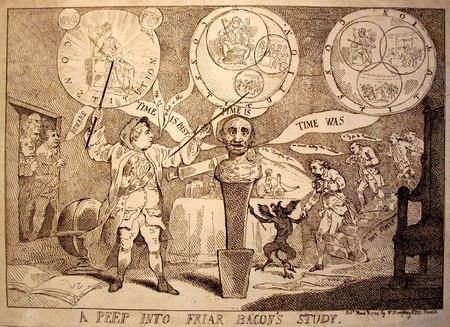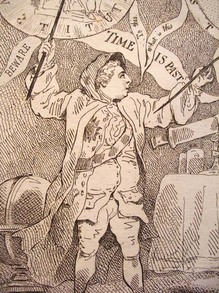The central figure of this Rowlandson satire is King George III (1738-1820) in the guise of Roger Bacon (1214?-1294). Bacon was an English friar and practicing alchemist. After his death, Bacon gained a reputation as a sorcerer thanks to the Renaissance publication The Famous Historie of Fryer Bacon (earliest extant edition: London, G. Purslowe, 1627; available online).
The story was turned into the Elizabethan drama, The Honourable History of Friar Bacon and Friar Bungay, in which Bacon’s “brazen head” would magically answer any questions put to it. This print shows King George with Bacon’s “brazen head,” wearing his cape and waving his two magic wands.
Bacon wrote a three-part Opus (Majus, Minus, and Terilium), while King George creates three separate visions, each with a different government structure. In March of 1784, King George actually did dissolve Parliament and change the structure of the British government. The new Ministry is being led down the back stairs by a little devil.
Roger Bacon (1214?-1294) The Opus majus of Roger Bacon. Translated by Robert Belle Burke (Bristol England; Sterling, Va.: Thoemmes Press, 2000). Firestone Library (F) B765.B23 O2 2000


